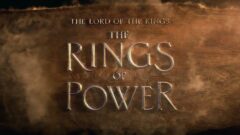HBO’s House of the Dragon depicts the tangled chains of succession in Game of Thrones’ House Targaryen with incredible storytelling and imagery throughout Season 1. Helping the show realize wide-ranging action set in a far-earlier Westeros with many more dragons, The Third Floor London worked with creatives and crew from pre-production to on-set filming to visualize shots and help inform filming.
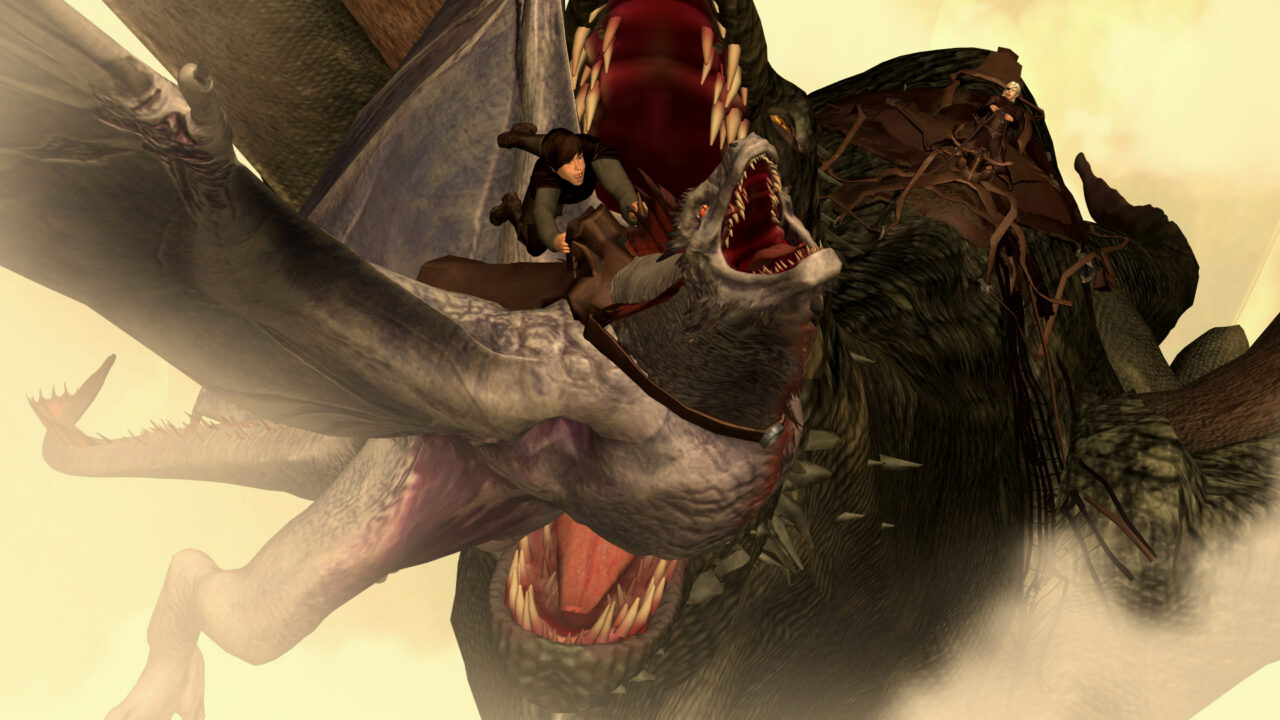
Previs of Vhagar launching at Luke and Arrax in Season 1, Episode 10 “The Black Queen”.
Read on for a recap of work by The Third Floor (TTF) to help create dynamic scenes and introduce new production technologies.
More Dragons!
House of the Dragon takes place hundreds of years before Game of Thrones in a time when dragons were common. Nine different dragons appear in Season 1 of the new series, which meant many more dragons to plan for across more shots and episodes.
“Previs provided a quick and efficient way to visualize the dragons, as well as their key characteristics and flying styles,” said Visualization Supervisor Joanne Smithies, The Third Floor London. “We worked with episode Directors, DoPs, multiple departments and our close collaborator VFX Supervisor Angus Bickerton to block the dragons across multiple sequences, as well as help visualize and highlight the unique characteristics of some of the new Dragons such as Caraxes and Vhagar.”

Previs from Season 1, Episode 3 “Second of His Name” as Daemon attacks the Stepstones. TTF artists captured the look and feel, working from a mood book. “The sequence is set at night, with limited light coming from small fires and the fire breath of Daemon’s dragon, Caraxes, “ Smithies recalled. “This naturally led us to play with silhouettes in the prevised sequence. We also, very early on, explored how Caraxes, and its snake-like body, might move itself on ground and in the air.”
The previs was built as large “master scenes” and brought into Unreal Engine to enable exploration across entire beats of action in real time. Scenes were set up so that as well as exploring angles from the ground we could also stay with a dragon flying at speed through a large environment yet still allow free motion to frame with the VCAM.
“Virtual Camera sessions were generally prepared and delivered for heavy VFX sequences where Dragons evolve in an environment that is mostly or entirely CG. It gave the Directors, DoPs and the VFX supervisor the opportunity to step into those CG scenes very early on, explore the environment, and direct the action.” said Smithies. “They could watch the beats from different angles, record as many shots and as many takes as needed and play around with them in the editorial room. We aimed to make the look of those beats as faithful to the final goal as possible, adding heavy rain and lightning in the Chase sequence, or populating the virtual set of the Dragon Pit with thousands of people in the Coronation scene. The aim was to make the experience as immersive as possible.” said Smithies.

Previs of Vhagar revealed in the clouds and dwarfing Arrax in Season 1, Episode 10 “The Black Queen”. TTF collaborated with episode directors and DoPs to visualize sequences like Vhagar Chasing Arrax, Episode 10 “The black queen” Creatives could explore the previs with VCAM in real time to design and record angles and camera composition.
Tech’ing the Shoot
In addition to visualizing shots in previs, artists interfaced across departments to prepare technical schematics for dragon shots, dragon-riding shots and other large shot layouts. The techvis renders and simulations brought together a picture of the equipment and setups needed to capture the action that had been visualized, based on input from the crew and the approved previs.


Previs and Techvis of Rhaenys and her dragon, Meleys, interrupting the coronation in Season 1, Episode 9 “The Green Council.” The sequence would be filmed on a large virtual stage, using a partial-built set. “Through the previs, the director and VFX supervisor could visualize the actors, the crowd and dragon in relation to the scale of the space,” Smithies notes. “Techvis was then provided to inform about any particular aspect of the shots that needed to be discussed across departments.”
Seeing More on Set
Imagining where dragons would appear in a shot was a big part of the production and VFX planning. The Third Floor’s AR simulcam app, Cyclops, enabled the digital dragons that would be created by the VFX teams in post to be previewed live with the real-world set, location and actors – or anywhere discussions were happening, by holding up an iPad. Digital extensions to real sets and components of complete virtual sets could be seen in context to a location or shooting stage as well.

Creatives and crew used TTF’s portable AR app Cyclops to visualize the location and size of dragons in relation to the scene, sets and actors. Here, Vhagar is seen aligned with Laena Valeryon in blocking for Season 1, Episode 6 “The Princess and the Queen.”
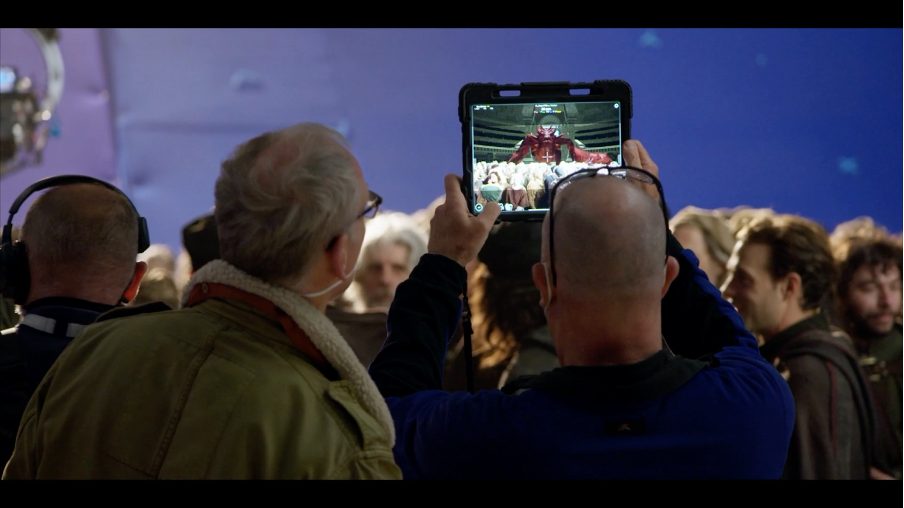
Cyclops is used to visualize a CG Meleys with the real crowd and a virtual extension in Season 1, Episode 9. Various poses were prepared for the dragons, enabling the characters to be easily dropped into different sets and locations.
Cyclops was also part of a process to create “Video viz” to prep shot lists and cuts for LED volume shoots. The process allowed the CG Dragonstone backdrop to be tracked live behind performers during rehearsals.
Dragon Solves
As on Game of Thrones, motion control virtual production was again used to capture realistic motion for dragon rider plates. Dragon pre-animation, rider and camera movement were aligned in techvis, with data sent to replicate the movement on practical rigs as actors were flying and diving on their “dragons.”
“A term we used for the dragon-riding shots is a ‘solve,’ which is basically approximating the relationship between dragon, actor and environment across a camera move and informing the positions needed to capture the envisioned action,” continued Smithies. “Sometimes a shot would have multiple dragons and riders, in which case we would need to have multiple motion base solves.”
For some scenes, motion buck footage was captured on the LED volume. An example of this is the Dragon Chase scene in Episode 10, where the motion control buck was operated on the LED stage with practical wind and rain.
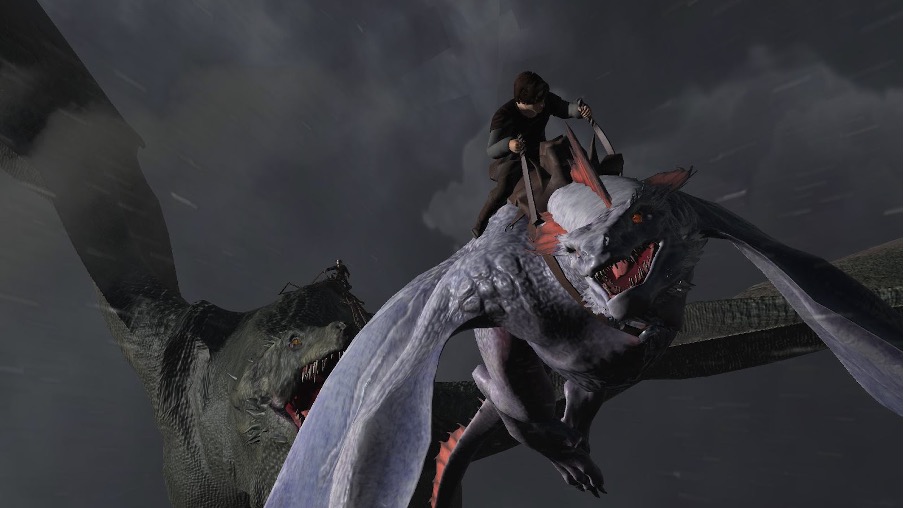
The scene when Aemond on Vhaghar chases Luke on Arrax through a storm used an end-to-end workflow from previs blocking and VCAM to on-volume motion base and capture against the LED wall.
The storm chase was a culmination of the director and DoP’s ideas coming into previs, part of it being blocked in VCAM and being filmed on-volume for motion base with LED projections, practical rain and storm.
“The sequence originated with story beats. Director Greg Yaitanes described the shots and sent across his own reference using dragon figurines to explain the more complex shots, which was incredibly useful. From there TTF created the previs, which was thereafter explored further with VCAM in Unreal. It’s an amazing sequence that built upon work by all the collaborators – from virtual blocking, lighting and camera to motion control buck photography to LED stage projections, special effects and Pixomondo’s final dragon animation and effects.”
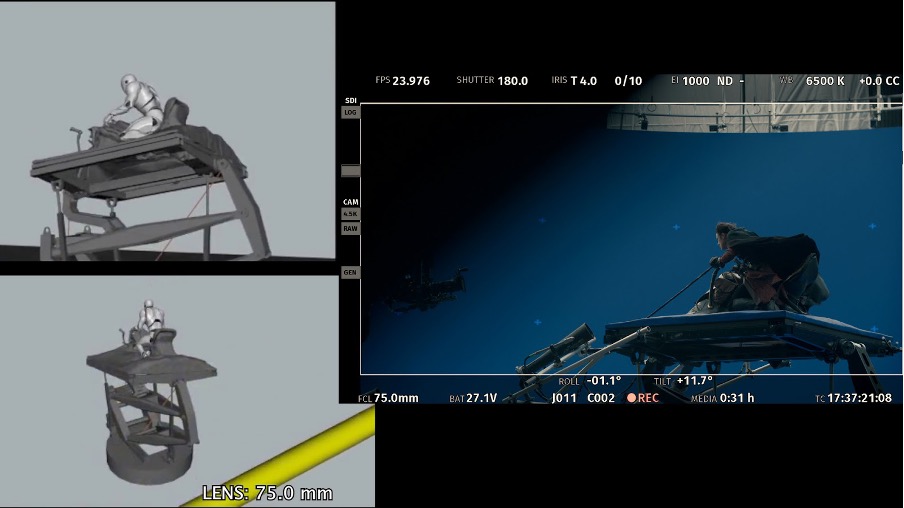
Motion of the dragon was pre-animated and tied in with the camera move to produce motion data to be played back to the practical dragon rig on stage.
Find all ten episodes streaming on HBO Max.




